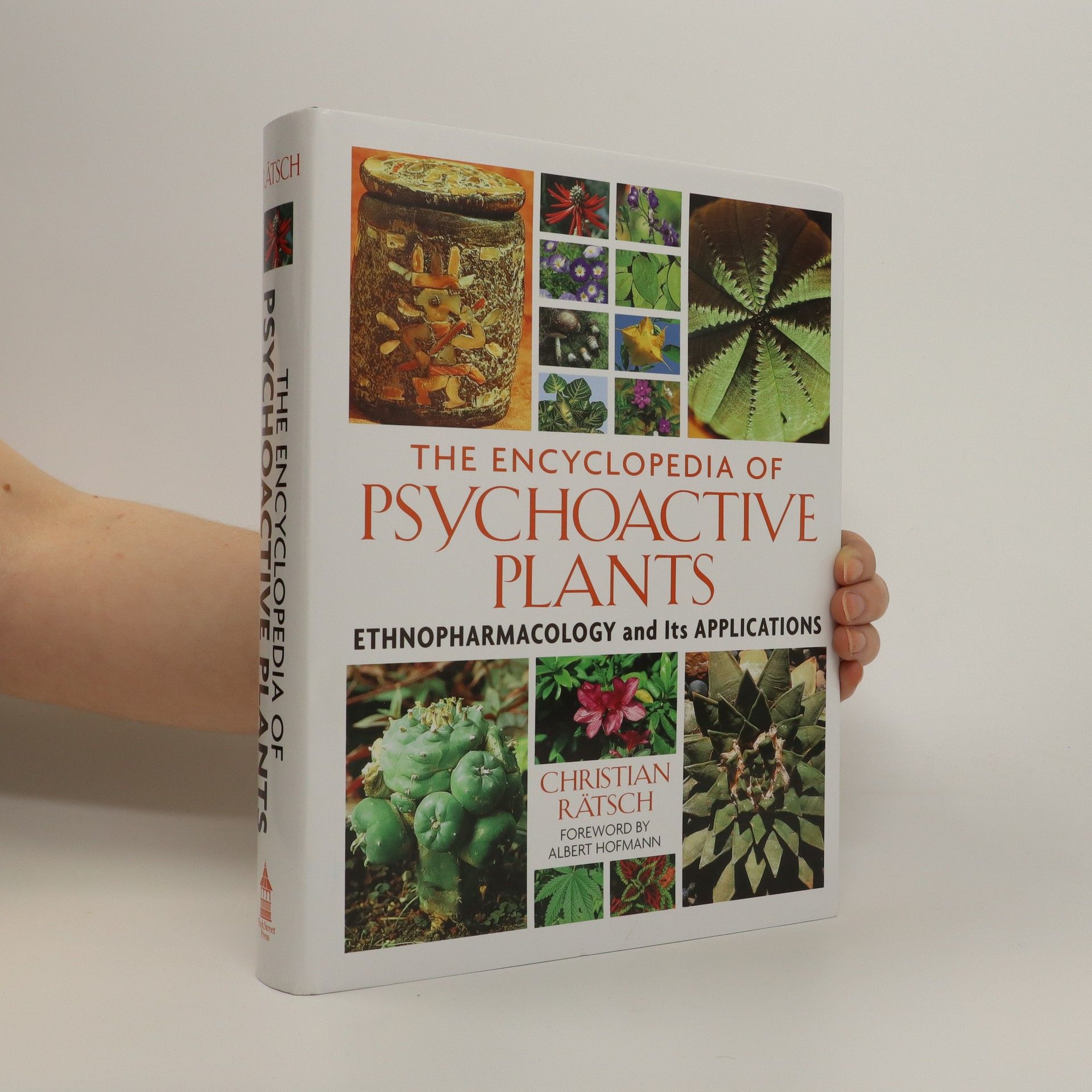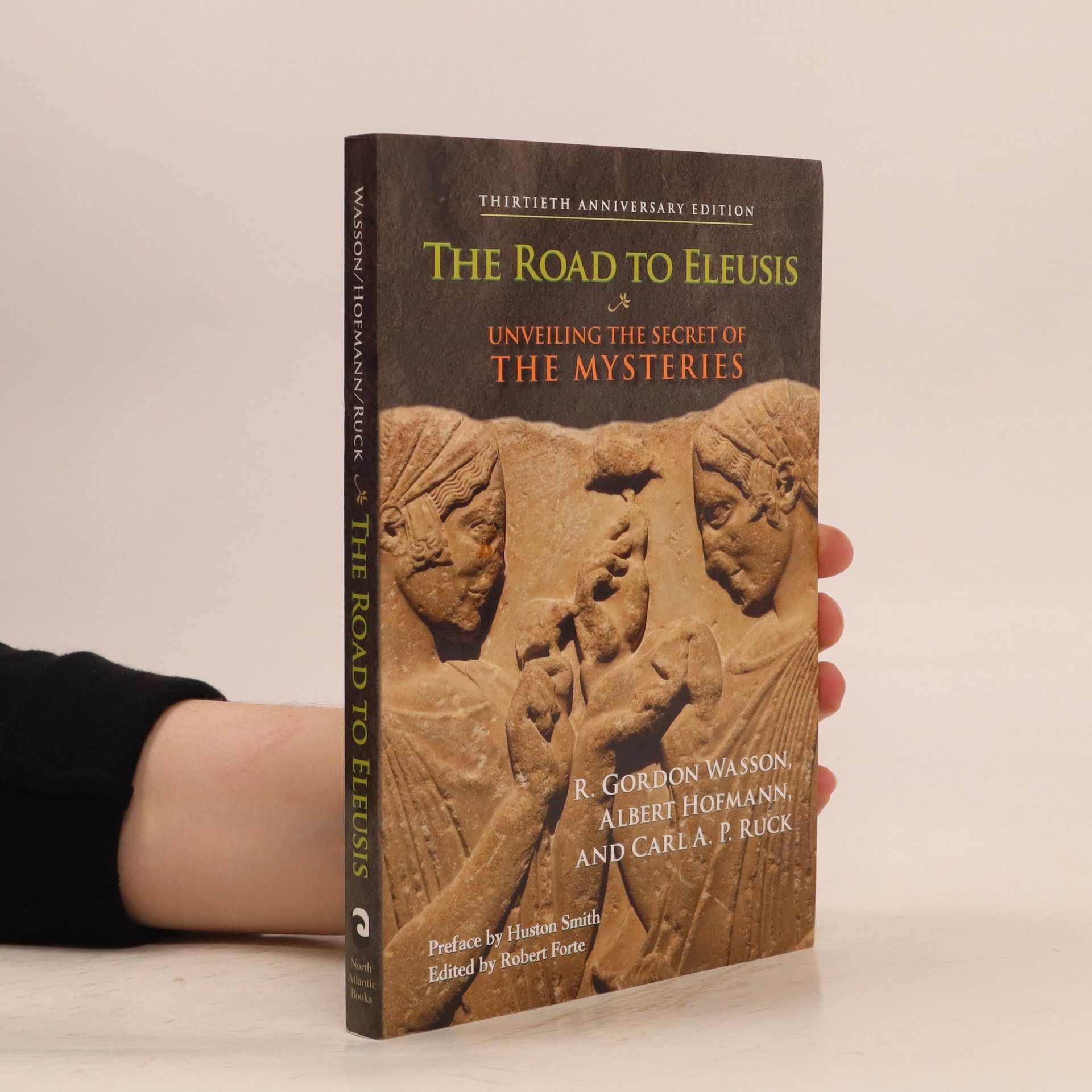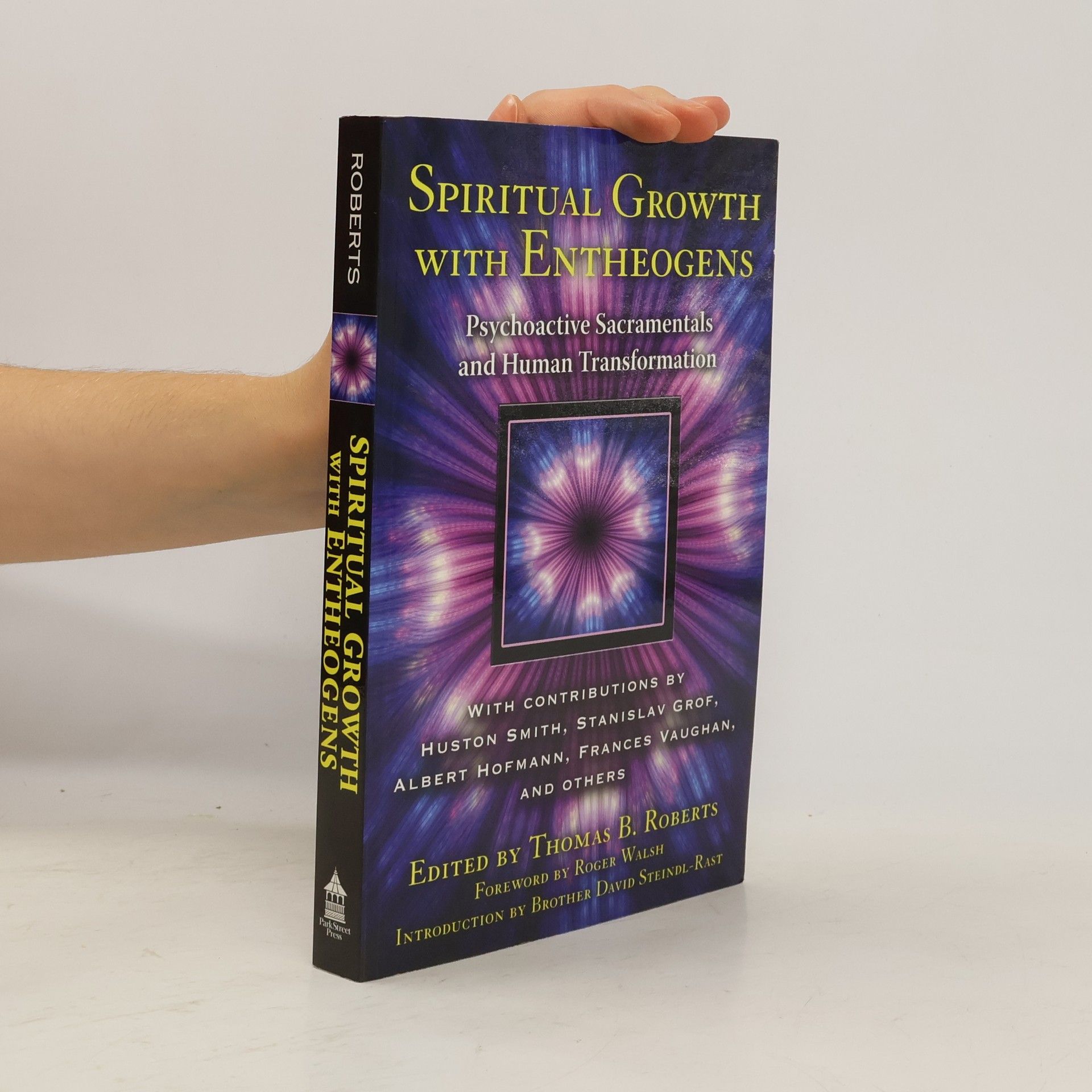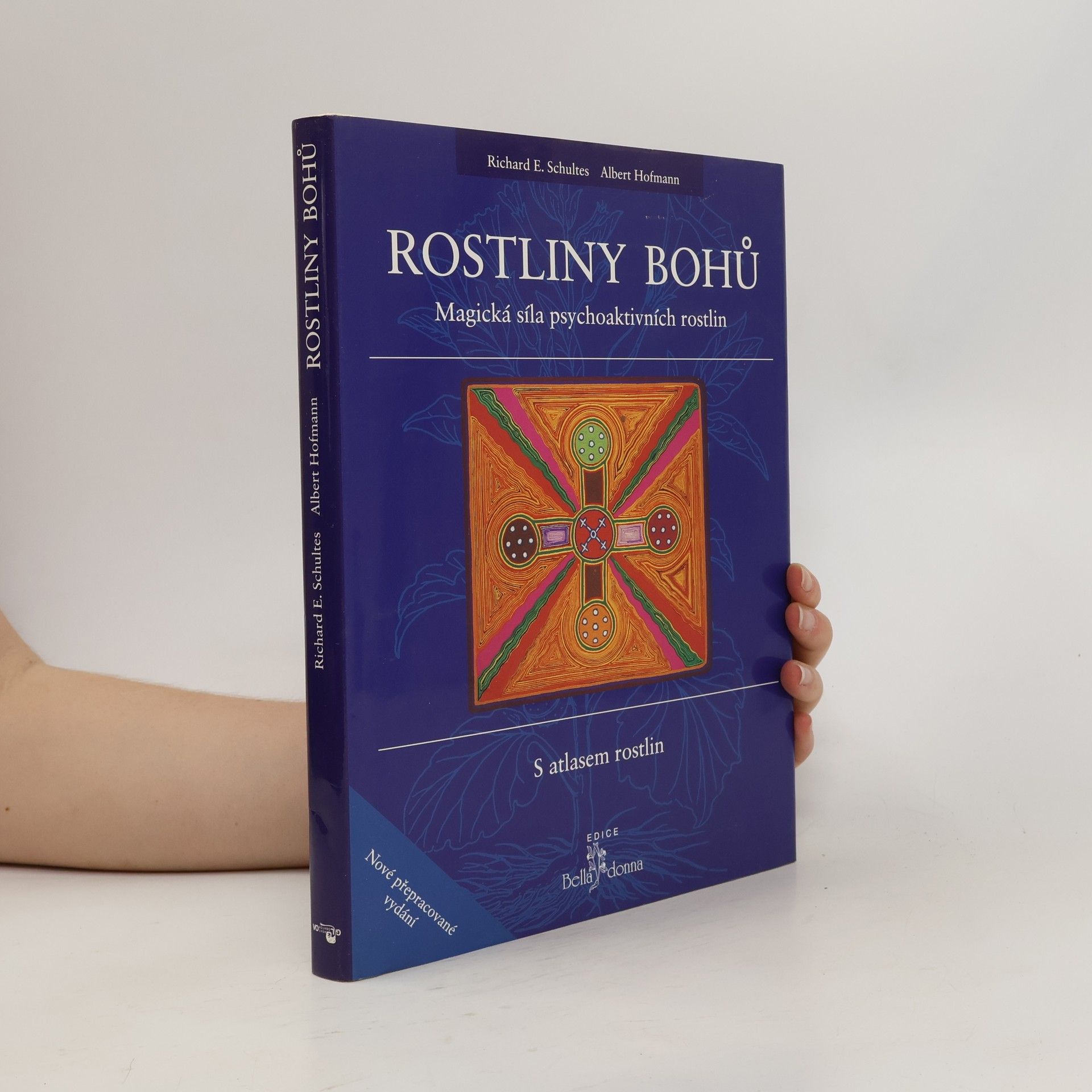Nel 1943 Albert Hofmann sintetizzò la dietilamide dell'acido lisergico (LSD) L'autore in questo libro racconta la storia della scoperta dell'LSD e cerca di fare chiarezza sugli eventi che ne sono seguiti: i primi 15 anni in cui l'LSD è stato impiegato quasi esclusivamente in psichiatria e nella ricerca biologica; poi, negli anni Sessanta, la sua comparsa nel panorama delle droghe, fino a diventare la droga di più largo consumo negli Usa, il suo diventare una droga di culto fra gli hippy e altri movimenti di contestazione; l'interruzione dell'uso terapeutico, la messa al bando. E l'altra faccia della medaglia: le caratteristiche e le proprietà della sostanza, le motivazioni avanzate da parte della psichiatria sulle istituzioni sanitarie affinché l'LSD possa essere di nuovo disponibile per il trattamento terapeutico
Albert Hofmann Libri
Albert Hofmann è stato uno scienziato svizzero, noto principalmente per il suo lavoro pionieristico nella sintesi della dietilamide dell'acido lisergico (LSD) e nella documentazione dei suoi profondi effetti psichedelici. La sua ricerca si è estesa all'isolamento e alla sintesi di composti chiave presenti nei funghi psichedelici, la psilocibina e la psilocina. Gli sforzi scientifici di Hofmann si sono addentrati nell'intricata chimica delle sostanze psicoattive vegetali e fungine, esplorando le loro strutture molecolari e le potenziali applicazioni. Il suo vasto corpus di opere offre profonde intuizioni sulla complessa interazione tra composti chimici e coscienza umana.







The encyclopedia of psychoactive plants
- 944pagine
- 34 ore di lettura
This comprehensive guide covers the botany, history, distribution, and cultivation of 414 psychoactive plants and related substances. It explores how culturally sanctioned use of these plants can provide insights into the nature of reality and includes 797 color photographs along with 645 black-and-white illustrations. Throughout history, plants have been valued for their nourishing, healing, and transformative properties, with the most powerful ones often regarded as sacred. The author details the botany, history, and preparation of over 400 psychoactive plants, discussing their ritual and medicinal uses, as well as cultural artifacts and art inspired by them. The text begins with 168 well-known psychoactives, such as cannabis and datura, and expands to include 133 lesser-known substances, “legal highs,” and plants from mythological contexts. Additionally, it covers products like ayahuasca, incense, and soma. Lavishly illustrated with images from the author’s global fieldwork, the book showcases the people, ceremonies, and art associated with the ritual use of these sacred psychoactives.
Where the Gods Reign
- 132pagine
- 5 ore di lettura
Where the Gods Reign is a magnificent book by one of the greatest ethnobotanical explorers known to this century. It is an essential for those interested in cultural anthropology, ethnobotany, and the Amazon in general.
"In the traditions of every culture, plants have been highly valued for their nourishing, healing, and transformative properties. The most powerful of those plants, which are known to transport the human mind into other dimensions of consciousness, have always been regarded as sacred. In this book, the world's most renowned authorities on psychoactive flora provide a fascinating and moving testimony of these "plants of the gods," tracing their use throughout the world and their significance in shaping history and culture. Of the ninety-one hallucinogenic plants beautifully illustrated and characterized in their lexicon, the authors elaborate in vivid detail on fourteen that have had profound significance for human beings. Drawing on fourteen years of field work, Dr. Richard Evans Schultes describes pilgrimages made to gather the sacred plants as well as the rites, prayers, songs, and dances associated with their use. His accounts are augmented by Dr. Albert Hofmann's lucid explanations of the biochemistry of these psychotropic substances. The text is accompanied by numerous illustrations, more than on hundred of which are in full color. Included are rare photographs - many published here for the first time - of plants and the people who have used them as well as ceremonies, sculpture, paintings, pottery, and weavings related to the ritual use of these sacred hallucinogens" -- Back cover
Dr. Albert Hofmann, one of this century's greatest minds, offers a lifetime of insights, observations, and discussions. He leads us on an exploration of reality perception, where our newly discovered insights are drawn into intellectual meditation. Reality is approached as a combination of subjective and objective truths, which must be unified for ultimate awareness. This amazing book will expand your mind and lift you to a level where the material and spiritual aspects of your life exist in harmony.
LSD and the Divine Scientist
The Final Thoughts and Reflections of Albert Hofmann
- 128pagine
- 5 ore di lettura
Exploring the intersection of chemistry and consciousness, this work delves into the author's personal experiences with LSD and other mind-altering substances. It reflects on the natural sciences and their connection to the soul, emphasizing a quest for happiness through expanded awareness. The insights offered provide a unique perspective on the transformative potential of psychedelics and their implications for understanding the human experience.
The secretive Mysteries conducted at Eleusis in Greece for nearly two millennia have long puzzled scholars with strange accounts of initiates experiencing otherworldly journeys. In this groundbreaking work, three experts—a mycologist, a chemist and a historian—argue persuasively that the sacred potion given to participants in the course of the ritual contained a psychoactive entheogen. The authors then expand the discussion to show that natural psychedelic agents have been used in spiritual rituals across history and cultures. Although controversial when first published in 1978, the book’s hypothesis has become more widely accepted in recent years, as knowledge of ethnobotany has deepened. The authors have played critical roles in the modern rediscovery of entheogens, and The Road to Eleusis presents an authoritative exposition of their views. The book’s themes of the universality of experiential religion, the suppression of that knowledge by exploitative forces, and the use of psychedelics to reconcile the human and natural worlds make it a fascinating and timely read. This 30th anniversary edition includes an appreciative preface by religious scholar Huston Smith and an updated exploration of the chemical evidence by Peter Webster.
Focusing on the historical and scientific significance of ergot alkaloids, this work offers an in-depth exploration of the botany, cultivation, and pharmacological potential of the ergot mushroom and other magical plants. Albert Hofmann chronicles the evolution of their use, from early medical applications to modern psychotherapy, detailing the synthesis of key compounds like ergotamine. The book also highlights indigenous practices surrounding psychotropic plants and introduces various classifications of hallucinogens, enriching the understanding of their ceremonial and therapeutic roles.
Spiritual Growth with Entheogens
Psychoactive Sacramentals and Human Transformation
- 320pagine
- 12 ore di lettura
Reveals entheogens as catalysts for spiritual development and direct encounters with the sacred• With contributions by Albert Hofmann, Huston Smith, Stanislav Grof, Charles Tart, Alexander “Sasha” Shulgin, Frances Vaughan, and many others• Includes personal accounts of Walter Pahnke’s Good Friday Experiment as well as a 25-year follow-up with its participants• Explores protocols for ceremonial use of psychedelics and the challenges of transforming entheogenic insights into enduring changeModern organized religion is based predominantly on secondary religious experience--we read about others’ extraordinary direct spiritual encounters in the distant past and have faith that God is out there. Yet what if powerful sacraments existed to help us directly experience the sacred? What if there were ways to seek out the meaning of being human and our place in the universe, to see the sacred in the world that surrounds us?In this book, more than 25 spiritual leaders, scientists, and psychedelic visionaries examine how we can return to the primary spiritual encounters at the basis of all religions through the guided use of entheogens. With contributions by Albert Hofmann, Huston Smith, Stanislav Grof, Charles Tart, Alexander “Sasha” Shulgin, Frances Vaughan, Myron Stolaroff, and many others, this book explores protocols for ceremonial use of psychedelics, the challenges of transforming entheogenic insights into enduring change, psychoactive sacraments in the Bible, myths surrounding the use of LSD, and the transformative ayahuasca rituals of Santo Daime. It also includes personal accounts of Walter Pahnke’s Good Friday Experiment as well as a 25-year follow-up with its participants. Dispelling fears of inauthentic spirituality, addiction, and ill-prepared encounters with the holy, this book reveals the potential of entheogens as catalysts for spiritual development, a path through which faith can directly encounter God’s power, and the beginning of a new religious era based on personal spiritual experience.
Rostliny bohů. Magická síla psychoaktivních rostlin
- 208pagine
- 8 ore di lettura
Obsáhlá obrazová publikace o halucinogenních rostlinách celého světa.


